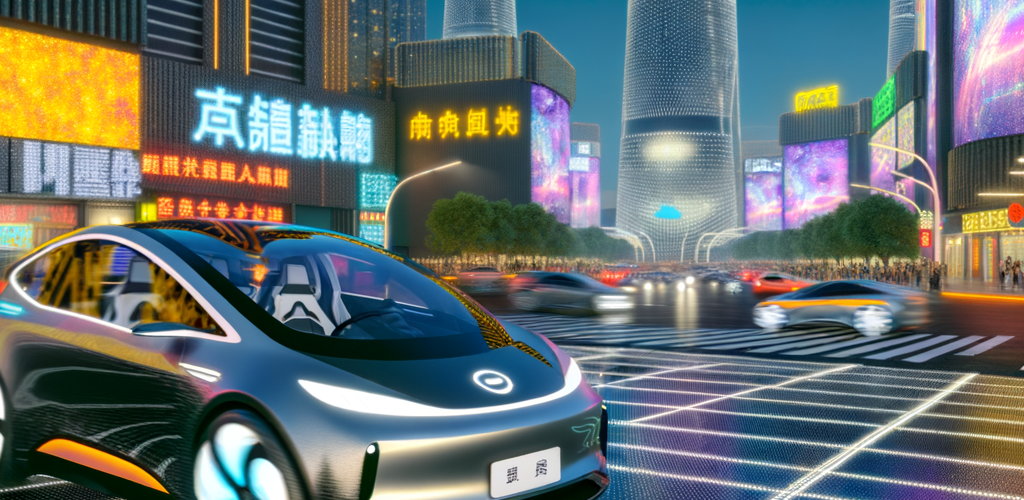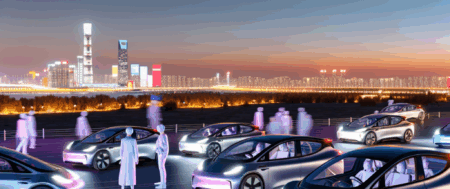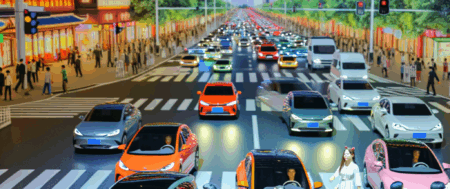China’s rise as the top and largest automotive market is fueled by its growing economy, urbanization, and an expanding middle class, with a significant shift towards Electric Vehicles (EVs) and New Energy Vehicles (NEVs) due to environmental concerns and strong government incentives. This surge places China at the forefront of electric mobility. Foreign automakers eager to penetrate this lucrative market must navigate a complex regulatory landscape, often forming joint ventures with domestic car brands to meet regulations and align with consumer preferences. The success in this competitive market hinges on strategic partnerships, a deep understanding of technological advancements, and a commitment to innovation, especially in areas like autonomous driving and connectivity. With government policies promoting electrification, and an emphasis on high-tech features, brand value, and environmental impact, China’s automotive sector is a dynamic force, shaping global market competition and making strategic partnerships essential for anyone looking to succeed in this evolving landscape.
In the fast-paced world of automotive innovation and market dynamics, China stands out as the largest automotive market, an accolade it has earned through years of exponential growth in both production and sales. As the epicenter of the global auto industry, it presents a landscape brimming with opportunities and challenges, underscored by its rapidly growing economy, swelling urbanization, and an ever-expanding middle class with a voracious appetite for mobility. This intricate market is not only a battleground for domestic car brands and foreign automakers but also a hotbed for the burgeoning sectors of Electric Vehicles (EVs) and New Energy Vehicles (NEVs), propelled by pressing environmental concerns and robust government incentives.
The synergy between foreign giants and local stalwarts through strategic joint ventures exemplifies the innovative approaches to navigating China’s complex regulatory landscape. This is a market where understanding consumer preferences goes hand-in-hand with staying abreast of technological advancements to remain competitive. The shift towards sustainable mobility is palpable, with China leading the charge in the global transition to greener wheels.
Our comprehensive exploration of China’s automotive sector, from the fervor driving its largest automotive market status to the intricate dance of market competition and strategic partnerships, sheds light on the multifaceted nature of this dynamic field. As we delve into topics ranging from the electrification of the dragon to the implications of growing economy and urbanization on automotive demand, we unveil the contours of a market at the forefront of shaping the future of global mobility. Join us as we navigate the challenges and seize the opportunities in China’s evolving automotive landscape, a journey that promises insights into the engine powering the world’s largest automotive market.
1. “Navigating the World’s Largest Automotive Market: The Rise of China in Global Auto Production and Sales”

In recent years, China has ascended to the pinnacle of the global automotive industry, solidifying its position as the largest automotive market in terms of both production and sales. This monumental rise is largely attributed to the nation’s rapidly growing economy, an expanding middle class, and accelerated urbanization, factors that have collectively fueled an insatiable demand for vehicles. The Chinese market’s appetite encompasses a wide spectrum of automotive offerings, from domestic car brands that resonate with local consumer preferences to foreign automakers that add international flair to the mix. However, it is the surge in electric vehicles (EVs) and new energy vehicles (NEVs) that truly distinguishes China’s automotive landscape, driven by government incentives and mounting environmental concerns.
Navigating the regulatory landscape in China poses a unique set of challenges for foreign automakers, necessitating the formation of strategic partnerships through joint ventures with local Chinese companies. These alliances are not merely optional but essential for accessing China’s vast consumer base while adhering to the nation’s complex legal and business environments. Such collaborations have become a cornerstone for success in the Chinese market, enabling international brands to leverage the local expertise of Chinese firms to meet stringent regulations and consumer expectations.
The competitive dynamics of the Chinese automotive market are influenced by a blend of factors including technological advancements, consumer preferences, and government policies. The push towards electrification, a key component of China’s strategy to combat pollution, has placed EVs and NEVs at the forefront of market competition. Government incentives aimed at promoting these environmentally friendly alternatives have further catalyzed their adoption, making China the top market for electric mobility.
Technological advancements play a critical role in shaping the future of the automotive industry in China. Innovations in autonomous driving, connectivity, and electric powertrains are redefining what vehicles can offer, aligning with the Chinese consumer’s increasing demand for high-tech features and sustainable options.
In this dynamic and rapidly evolving environment, understanding consumer preferences is paramount. The Chinese consumer’s growing emphasis on brand, technology, and environmental impact is reshaping the automotive landscape, prompting both domestic and foreign automakers to adapt swiftly to maintain a competitive edge.
The largest automotive market in the world, China represents a land of opportunity and challenge in equal measure. Success in this lucrative but complex market requires a deep understanding of its regulatory landscape, a keen insight into consumer behavior, and the forging of strategic partnerships. As the market continues to grow and evolve, driven by urbanization, a growing economy, and environmental concerns, the automotive industry in China is set to remain at the forefront of global auto production and sales for the foreseeable future.
In conclusion, the ascent of China as a top contender and the Largest Automotive Market globally underscores the pivotal role it plays in shaping the future of the automotive industry. With its growing economy, increasing urbanization, and the expansion of a wealthier middle class, China presents an unparalleled opportunity for both Domestic Car Brands and Foreign Automakers. The market’s openness to Electric Vehicles (EVs) and New Energy Vehicles (NEVs), driven by strong Government Incentives and rising Environmental Concerns, highlights the country’s commitment to sustainable development. Joint Ventures have become a strategic necessity for foreign entities aiming to penetrate this complex yet rewarding market, allowing them to navigate the intricate Regulatory Landscape effectively.
The dynamic nature of China’s automotive sector, fueled by Consumer Preferences, Technological Advancements, and Government Policies, creates a highly competitive environment. Success in this market does not come easily and requires a deep understanding of local nuances, Strategic Partnerships, and a keen eye on Market Competition. For companies willing to invest the time and resources, the Chinese automotive market offers immense potential, promising a future where innovation and sustainability drive growth. As the industry continues to evolve, keeping abreast of trends and adapting to the rapidly changing landscape will be crucial for any player looking to make a significant impact in the world’s Largest Automotive Market.







